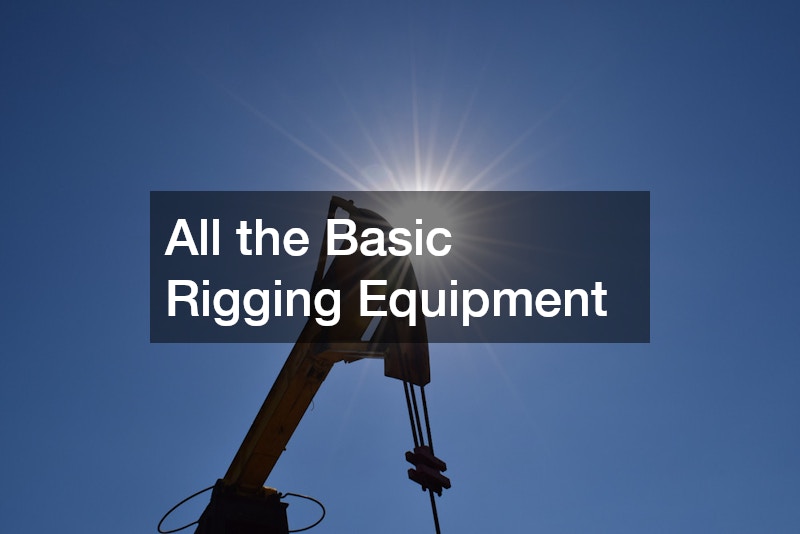
Rigging equipment plays a crucial role in industries that involve lifting and moving heavy loads, such as construction, manufacturing, maritime, and entertainment. Understanding the basic rigging equipment is essential for ensuring safety and efficiency on the job. Here’s a comprehensive overview of the fundamental rigging equipment used in various applications.
1. Slings
Slings are one of the most common and versatile pieces of rigging equipment.
They are used to secure loads and connect them to lifting devices like cranes or hoists. There are several types of slings, including:
Wire Rope Slings: Known for their strength and durability, wire rope slings are ideal for heavy-duty lifting tasks. They are commonly used in construction and maritime industries.
Synthetic Slings: Made from materials like nylon or polyester, synthetic slings are lightweight, flexible, and gentle on delicate loads. They are widely used in manufacturing and industries where the load surface must be protected.
Chain Slings: Composed of alloy steel chains, chain slings are highly durable and resistant to extreme temperatures and harsh environments. They are suitable for lifting heavy loads with irregular shapes.
2. Shackles
Shackles are U-shaped pieces of metal secured with a pin or bolt across the opening. They are used to connect slings, ropes, chains, and other rigging hardware to the load or lifting device. Shackles come in various types, including anchor shackles, chain shackles, and D-shackles, each designed for specific applications. Choosing the right shackle is essential for maintaining the integrity of the rigging setup.
3. Hooks
Hooks are essential components in rigging systems, used to connect the load to the lifting device. There are several types of hooks, including:
Eye Hooks: Designed with a closed eye, these hooks are commonly used with chain slings and provide a secure connection.
Swivel Hooks: These hooks can rotate, allowing the load to spin without twisting the sling or chain.
Clevis Hooks: Featuring a U-shaped clevis and pin, these hooks are easy to attach and detach from the rigging system.
4. Turnbuckles
Turnbuckles are used to adjust the tension in rigging assemblies. They consist of a metal frame with threaded eye bolts, hooks, or jaws on either end. By rotating the frame, the distance between the ends is adjusted, tightening or loosening the rigging setup. Turnbuckles are vital for ensuring the rigging system is properly tensioned and balanced.
5. Rigging Blocks and Pulleys
Rigging blocks and pulleys are used to change the direction of the load or to gain a mechanical advantage by reducing the force required to lift a load. Blocks consist of one or more pulleys within a housing and are used in conjunction with ropes or cables. They are commonly used in scenarios where loads need to be lifted vertically or moved horizontally over long distances.
6. Lifting Clamps
Lifting clamps are used to grip and lift materials, such as steel plates, beams, or pipes. They are designed to securely hold the load without causing damage. There are different types of clamps, including vertical, horizontal, and beam clamps, each suited for specific lifting tasks.
7. Eye Bolts and Eye Nuts
Eye bolts and eye nuts are essential for creating secure attachment points in rigging systems. Eye bolts are threaded bolts with a looped head, allowing them to be screwed into a load or structure. Eye nuts, on the other hand, are used with threaded rods or bolts to create lifting points.
.



